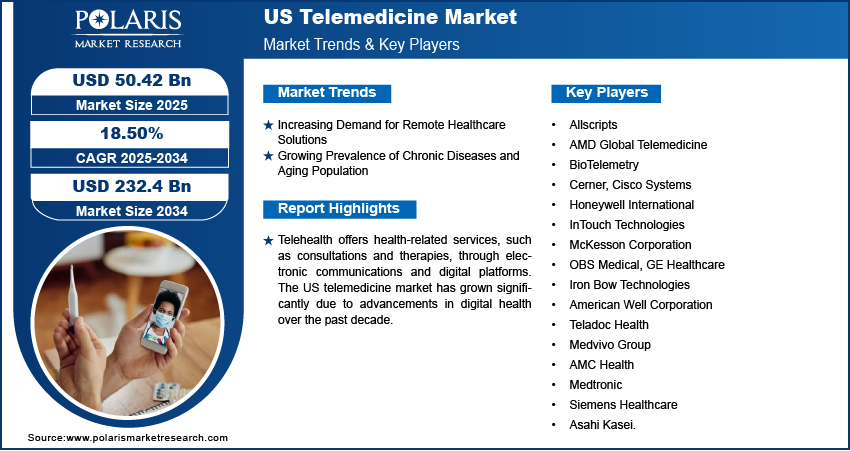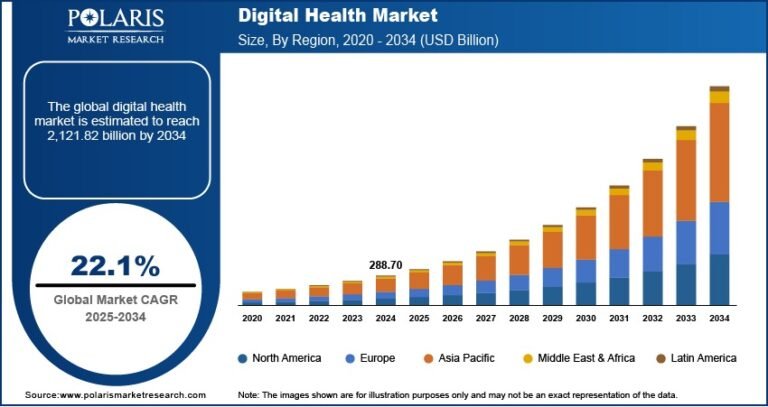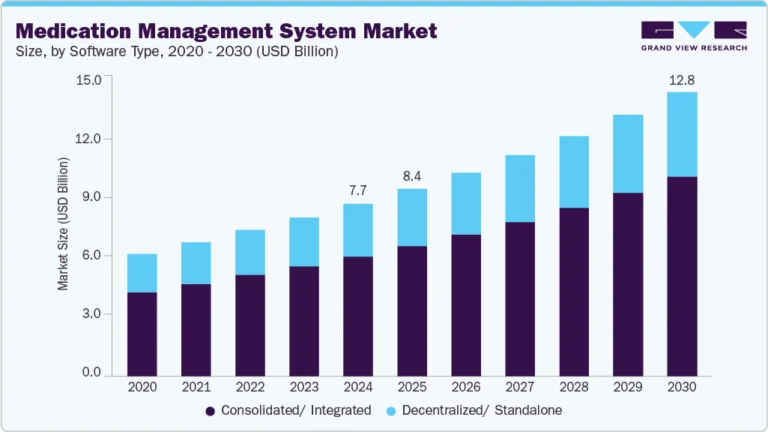US Telemedicine Market is anticipated to reach USD 232.4 billion by 2034, growing at a robust CAGR of 18.50%.

The US telemedicine market was valued at USD 42.6 billion in 2024 and is projected to grow at a CAGR of 18.50% from 2025 to 2034. Growth is fueled by increasing adoption of digital healthcare and remote patient monitoring technologies.
Key Market Trends & Insights:
- Normalization of Virtual Care: Telemedicine is no longer seen as an emergency alternative but a standard part of hybrid care models.
- Integration with AI and Remote Monitoring: Increasing use of AI-driven diagnostics, wearable health devices, and remote patient monitoring tools is improving care quality and personalization.
- Mental Health Services Surge: Virtual mental health consultations have become one of the fastest-growing segments within telemedicine due to demand for accessible and stigma-free support.
- Shift Toward Value-Based Care: Telemedicine supports preventive care and chronic disease management, aligning with value-based care models to reduce hospital readmissions.
- Regulatory Adjustments Supporting Growth: Continued policy evolution, including expanded Medicare and Medicaid reimbursement, is sustaining long-term telemedicine adoption.
Market Size & Forecast
Market size value in 2025 USD – 50.42 billion
Revenue forecast in 2034 USD – 232.4 billion
CAGR – 18.50% from 2025 to 2034
Request for Free Sample:
https://www.polarismarketresearch.com/industry-analysis/us-telemedicine-market/request-for-sample
U.S. Telemedicine Market Overview:
The U.S. Telemedicine Market has undergone rapid transformation, especially following the COVID-19 pandemic, which significantly accelerated digital health adoption across the country. Telemedicine — encompassing video consultations, remote monitoring, mobile health apps, and digital diagnostics — has become an integral part of healthcare delivery.
Market Growth Drivers:
- Expanding Access to Healthcare: Telemedicine bridges gaps in rural, underserved, and specialist-scarce regions, enhancing healthcare equity across the U.S.
- Consumer Convenience and Preference: Growing consumer demand for fast, on-demand care from the comfort of home drives widespread adoption.
- Technological Advancements: Improvements in broadband connectivity, mobile devices, and digital health platforms have made virtual care more effective and reliable.
- Chronic Disease Management Needs: The rising prevalence of diabetes, hypertension, and heart disease in the U.S. fuels demand for remote monitoring and virtual follow-ups.
- Supportive Regulatory Environment: Temporary policies enacted during the pandemic are increasingly being made permanent, such as cross-state licensure waivers and expanded reimbursement.
US Telemedicine Market Challenges:
- Digital Divide: Limited access to high-speed internet or digital literacy in certain populations restricts equitable telemedicine access.
- Reimbursement Variability: Inconsistencies in reimbursement policies across payers and states create uncertainty for providers and hinder investment.
- Licensing and Regulatory Barriers: Despite progress, interstate licensing and credentialing remain complex and restrictive for cross-border practice.
- Privacy and Data Security Concerns: Ensuring HIPAA compliance and protecting patient data in virtual environments is a persistent challenge.
- Clinical Limitations: Certain medical conditions still require in-person diagnosis, limiting the scope of telemedicine services for complex care.






